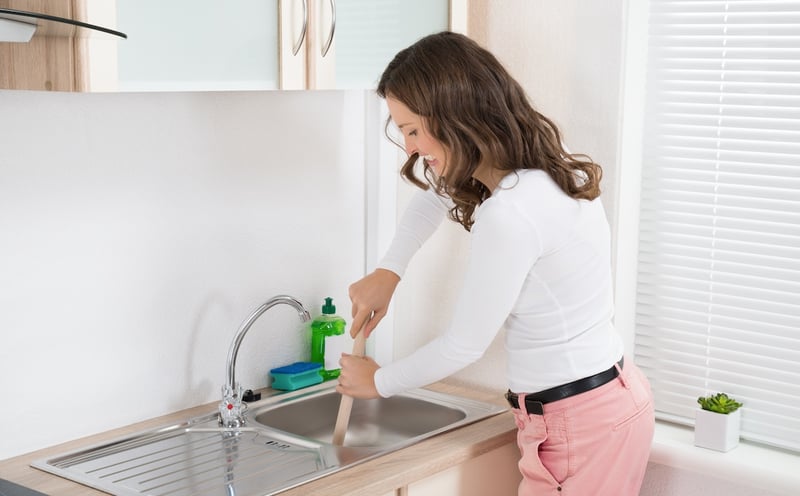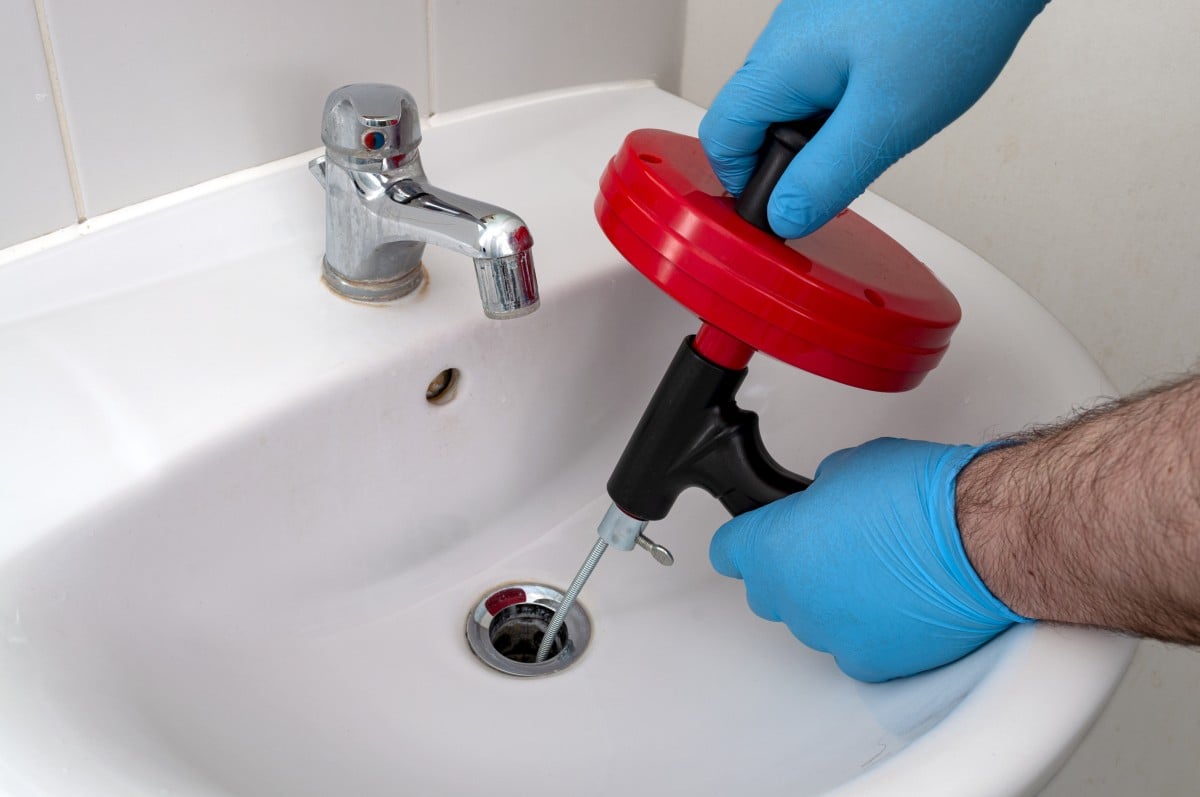5 DIY Secrets on How to Handle a Blocked Kitchen Sink
5 DIY Secrets on How to Handle a Blocked Kitchen Sink
Blog Article
Just how do you really feel on the subject of Repairing Common Household Plumbing Issues?

In this article, we will certainly be looking at 5 simple actions you can take to release your kitchen sink from blockages and also save you from the pain and embarrassment of handling a clogged kitchen area sink.
Blocked kitchen sinks are just one of one of the most usual drainage problems home owners deal with. And what's more, it's a undesirable and extremely awkward sight. Imagine going to the sink to do your recipes as well as figuring out that the drain is obstructed and water can not stream down quickly.
A lot of clogged up water drainages are caused by food debris, soap, oil, and fat bits. They block the sink as well as make it hard for water to drop the drainpipe quickly. While it is tempting to put a call through to the plumbing technicians, there are a couple of DIY hacks you can attempt initially prior to making that telephone call.
1. Baking Soda and Vinegar
As opposed to using any form of chemicals or bleach, this method is safer as well as not damaging to you or your sink. Baking soda as well as vinegar are daily house items used for numerous other things, and they can do the trick to your kitchen sink.
Firstly, get rid of any type of water that is left in the sink with a mug.
Then put a good amount of baking soda down the drain.
Pour in one cup of vinegar.
Seal the water drainage opening and also permit it to opt for some minutes.
Pour hot water down the drain to melt away various other persistent residue and particles.
Following this simple method can suffice, as well as you can have your cooking area sink back. Repeat the procedure as long as you consider necessary to clear the sink of this debris completely.
2. Attempt a Plunger
If the issue is not from the garbage disposal, you can try making use of a plunger. Bettors are conventional residence tools for this celebration, as well as they can come in useful if you utilize them appropriately. A flat-bottomed plunger is most ideal for this, however you can make do with what you have is a commode plunger.
Adhere to the list below simple actions to utilize the bettor successfully:
Secure the drain with a dustcloth and load the sink with some hot water
Place the bettor in position over the drainpipe as well as start plunging
Check to see if the water runs freely after a couple of plunges
Repeat the process until the drainage is cost-free
3. Perhaps it's the Garbage Disposal
In many cases, the blockage may be due to a blockage in the disposal. Usage pliers instead.
If this does not function, you can discover the following alternative to unclog your cooking area sink.
4. Make use of a Hanger
Utilizing a cord cloth hanger or a plumber's snake if you have one can do the trick. All you need do is align the hanger to go down the drain while you thoroughly pick out the bits triggering the obstruction.
Run hot water down the drain after this to see how effective you were.
5. Usage Boiling Water
When confronted with a stopped up sink, the first thing you must try is to put boiling water down the drain. That is about the most straightforward remedy to blocked sinks and drainages. Boiling water aids neutralize the particles as well as debris creating the obstruction, particularly if it's oil, soap, or grease bits, and also in many cases, it can flush it all down, and also your sink will certainly be back to normal.
Since hot water can thaw the lines and create even more damage, do not attempt this approach if you have plastic pipes (PVC). You may want to stick to using a plunger to get particles out if you utilize plastic pipelines.
Using this method, activate the faucet to see just how water flows after putting hot water down the drain. Try the procedure once again if the clog continues. The blockage could be extra persistent in some situations and also require even more than simply boiling water.
Final Words
Trying these couple of tricks might conserve you the expenses of having a plumber examine it. In several situations, a plumber is what we need. In cases where you locate it tough to unclog the sink also after attempting all these methods, it might be time to leave it to the professionals.
Get in touch with professional plumbing firms to fix your drain troubles and other different house plumbing demands.
Obstructed cooking area sinks are one of the most common drain problems homeowners face. Imagine going to the sink to do your dishes as well as finding out that the drain is blocked and water can not move down conveniently.
They obstruct the sink and also make it hard for water to go down the drainpipe quickly. When encountered with a clogged up sink, the initial point you need to try is to pour boiling water down the drain. Boiling water assists reduce the effects of the bits and debris causing the obstruction, specifically if it's oil, oil, or soap particles, and in several cases, it can purge it all down, and also your sink will certainly be back to regular.
How to Unclog a Kitchen Sink
Take the Plunge
Start your efforts by plunging. Use a plunger with a large rubber bell and a sturdy handle. Before getting to work on the drain, clamp the drain line to the dishwasher. If you don t close the line, plunging could force dirty water into the dishwasher.
Fill the sink with several inches of water. This ensures a good seal over the drain.
If you have a double sink, plug the other drain with a wet rag or strainer.
Insert the plunger at an angle, making sure water, not air, fills the bell.
Plunge forcefully several times. Pop off the plunger.
Repeat plunging and popping several times until the water drains.Clean the Trap
The P-trap is the curved pipe under the sink. The trap arm is the straight pipe that attaches to the P-trap and runs to the drain stub-out on the wall. Grease and debris can block this section of pipe. Here s how to unclog a kitchen sink by cleaning out the trap:
Remove as much standing water from the sink as possible.
Place a bucket under the pipe to catch the water as it drains.
Unscrew the slip nuts at both ends of the P-trap. Use slip-joint pliers and work carefully to avoid damaging the pipes or fasteners.
If you find a clog, remove it. Reassemble the trap.
If the P-trap isn t clogged, remove the trap arm and look for clogs there. Run the tip of a screwdriver into the drain stub-out to fetch nearby gunk.Spin the Auger
With the trap disassembled, you re ready to crank the auger down the drain line.
Pull a 12-inch length of cable from the auger and tighten the setscrew.
Insert the auger into the drain line, easing it into the pipe.
Feed the cable into the line until you feel an obstruction. Pull out more cable if you need to.
If you come to a clog, crank and push the cable until you feel it break through. The cable will lose tension when this happens.
Crank counterclockwise to pull out the cable, catching the grime and debris with a rag as the cable retracts.

Do you enjoy reading up on Common Household Plumbing Issues? Place a remark down below. We would be delighted to hear your suggestions about this blog post. We are looking forward that you visit us again before long. Loved our write-up? Please share it. Let others locate it. Many thanks for going through it.
Sink issues? Connect. Report this page